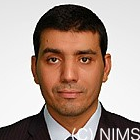Design, Fabrication, and Environment Applications of Nanobiosensors
A special issue of Processes (ISSN 2227-9717). This special issue belongs to the section "Manufacturing Processes and Systems".
Deadline for manuscript submissions: closed (20 September 2021) | Viewed by 2907
Special Issue Editor
Interests: decontamination; early warning sensors; mass-scale pure production of water-free toxins; reduce volume in waste management; metal resources from sand; sea coast and urban mining; nano membrane filtration; safe environment from released radiation around nuclear plants; green energy production; catalysis
Special Issue Information
Dear Colleagues,
With the eminent advancements in the field of nanotechnology and their provision of numerous viable solutions to meet the challenges related to diagnostics, treatments, bioelectronics, and environmental applications, there is expanding demand for the further development and design of nanobiosensors. The design/construction of compact nanobiosensor devices can result in the provision of numerous unique features, including accurate detection, high selectivity at ultraconcentrations, convenience, ease of use, low cost, and a wide scope of utilization and on-site implementation. In addition, the current decade is witnessing a distinct interest in developing portable monitoring devices to meet the challenges associated with clinical diagnosis, with many applications in the healthcare and environmental sectors. The design and production of nanobiosensors requires an incredible effort, resulting from the merging and integration of many research disciplines including engineering disciplines, materials science, environmental, chemical, biological, and medical sciences. In this regard, the current issue intends to highlight advanced research studies in the field of design, manufacturing, and environment applications of nanobiosensors.
Dr. Mohamed A. Shenashen
Guest Editor
Manuscript Submission Information
Manuscripts should be submitted online at www.mdpi.com by registering and logging in to this website. Once you are registered, click here to go to the submission form. Manuscripts can be submitted until the deadline. All submissions that pass pre-check are peer-reviewed. Accepted papers will be published continuously in the journal (as soon as accepted) and will be listed together on the special issue website. Research articles, review articles as well as short communications are invited. For planned papers, a title and short abstract (about 100 words) can be sent to the Editorial Office for announcement on this website.
Submitted manuscripts should not have been published previously, nor be under consideration for publication elsewhere (except conference proceedings papers). All manuscripts are thoroughly refereed through a single-blind peer-review process. A guide for authors and other relevant information for submission of manuscripts is available on the Instructions for Authors page. Processes is an international peer-reviewed open access monthly journal published by MDPI.
Please visit the Instructions for Authors page before submitting a manuscript. The Article Processing Charge (APC) for publication in this open access journal is 2400 CHF (Swiss Francs). Submitted papers should be well formatted and use good English. Authors may use MDPI's English editing service prior to publication or during author revisions.
Keywords
- nanobiosensor design
- nanomaterials
- biosensor
- sensors
- diagnostics
- environmental applications of nanobiosensors
- electrochemical-based nanobiosensors
- optical-based nanobiosensors
- biomolecule detection





